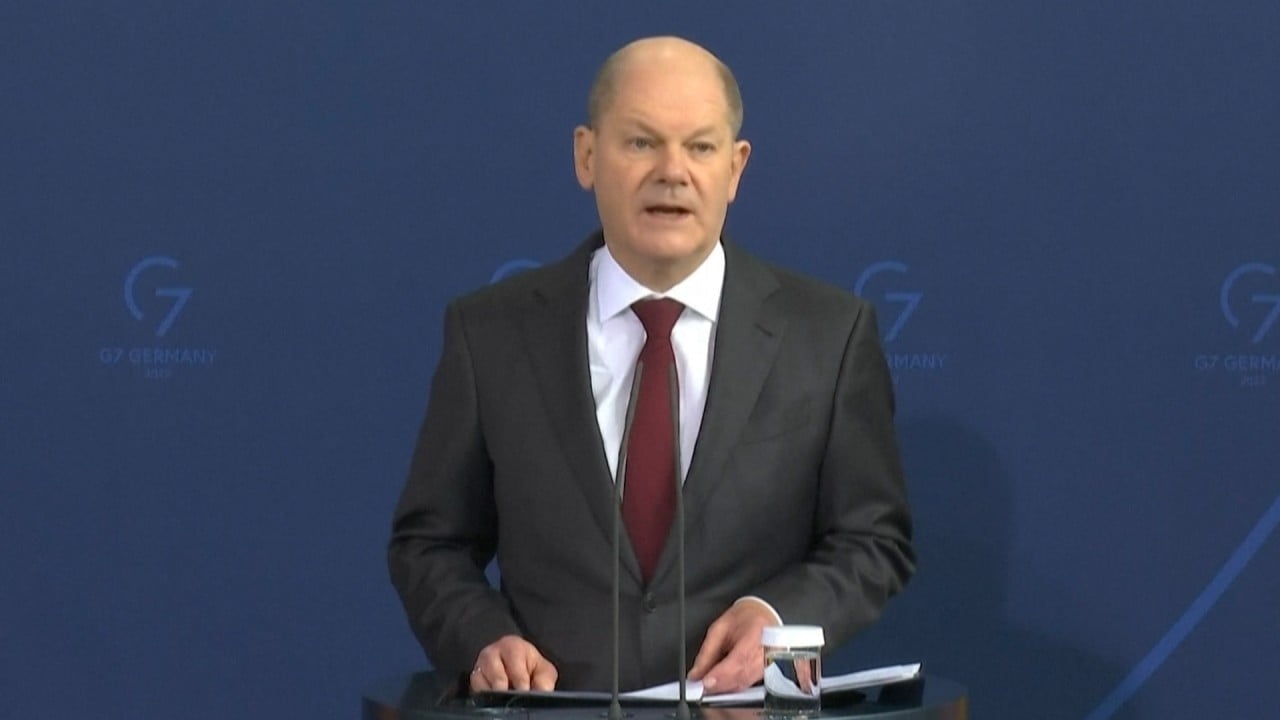
Higher energy prices over Ukraine invasion should worry Europe more than US
- Europe and the UK rely on imports from Russia for a third of their gas, putting them at risk from disrupted deliveries amid fighting in Ukraine
- The US should be more resilient given trends in household savings and less spending on energy
One of the main economic impacts from the events in Ukraine is higher energy prices. Oil prices have risen to more than US$100 per barrel, the highest in a decade.
The events in Ukraine could have some implications on the exports of oil, natural gas and other commodities. According to the International Energy Agency, Russia’s natural gas made up almost a third of European and British total consumption. Disruption of gas supplies to Europe could leave factories lacking the needed power to operate and households facing a surge in their heating bills.
Opec has pledged to raise production per month by 400,000 barrels per day since last year, but the cartel has fallen short of this commitment for much of the second half of 2021. US investment in new oil rigs has been slow to pick up. With global demand improving on the back of economic reopening, any disruptions from Russia or elsewhere will send oil prices higher.
However, with oil prices breaking above US$105 per barrel and rising, it could take longer for inflation to reach such levels. Along with a tight job market, US inflation could still be running at 3 per cent to 4 per cent for much of this year, above the Federal Reserve’s target of 2 per cent.
There are also concerns that higher petrol prices and heating costs could send consumers into a spending freeze. Almost 12 per cent of US household consumption in 2021 was on food and energy, but this share has come down from more than 20 per cent in the late 1970s and early 1980s. This means they should be more resilient towards more expensive food and petrol.
Moreover, the US household savings rate has seen upswings during the pandemic, and this provides an additional buffer. However, this could be a bigger challenge for emerging economies since food and energy typically make up a large share of their spending.

Whether we can avoid the dreaded scenario of high inflation and stagnant economy partly depends on geopolitical impact on commodity exports and whether other producers can step up and quickly address the shortfall.
Governments might also need to tap into their fiscal toolbox again to offset the higher fuel and food costs for businesses and households.
The Federal Reserve is meeting on March 15 and 16 to discuss monetary policy. We expect the central bank to still kick off its interest rate raising cycle with an increase of 25 basis points. With US President Joe Biden pledging to maintain ample energy supplies for American consumers, the Fed can focus on containing inflation instead of worrying about higher petrol prices hurting consumption.
Europe is the most vulnerable to economic repercussions from this conflict, specifically higher energy prices and uncertain supply. Weakened business and consumer confidence will also pose a challenge. The US is more insulated from the economic fallout given its robust domestic energy production and strong economic momentum.
Most Asian economies are net importers of energy. However, the Covid-19 pandemic is a bigger challenge in the near term than more expensive petrol.
Tai Hui is chief market strategist for the Asia-Pacific at JP Morgan Asset Management



